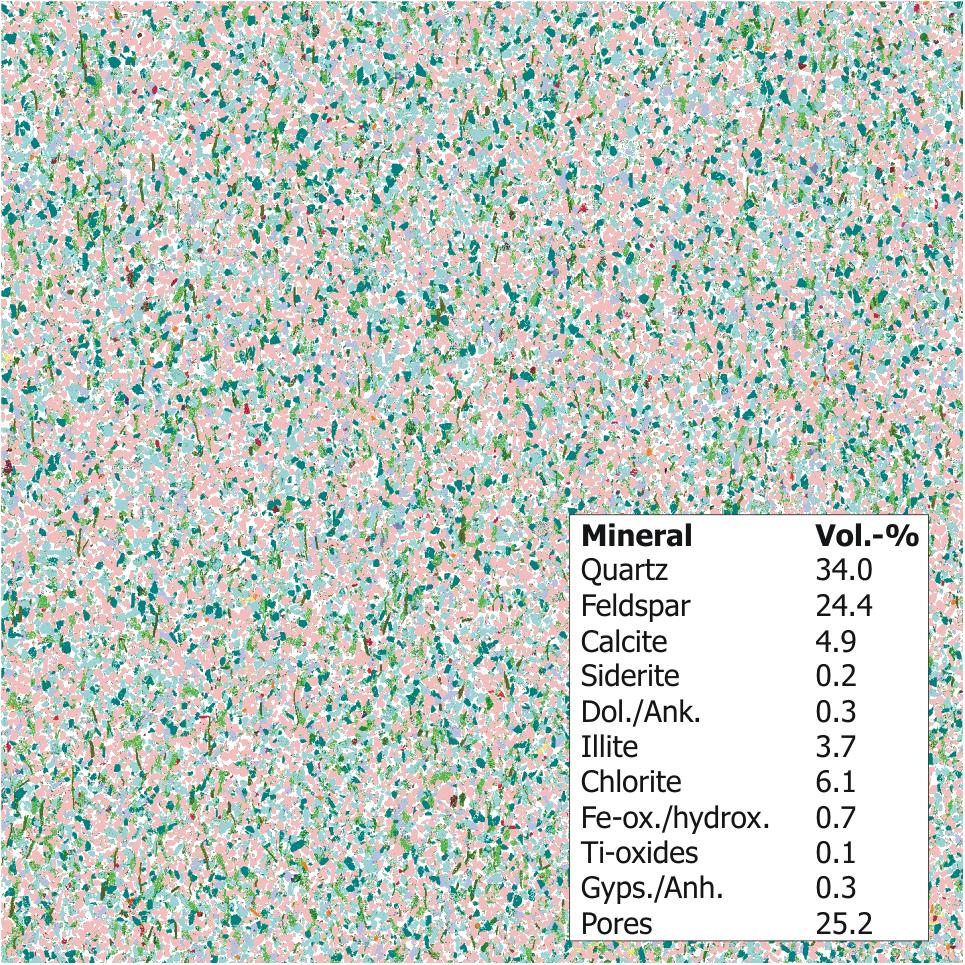Petrography of Sandstones
Image analysis of QEMSCAN data is a highly effective tool for the study of sandstones. Modal composition, porosity as well as minerals associated to pore space can be quantified automatically in QEMSCAN images. This supports rock classification and provides valuable information for the investigation of diagenetic evolution or rock alteration caused by CO2-sequestration or hot water injection for energy storage.
Figure 1 shows a QEMSCAN image of a sandstone from the Norwegian-Danish Basin for which modal composition is quantified. Unattended operation of the QEMSCAN technique facilitates analysis of interrogation areas sufficiently large for quantification not only of rock forming minerals but also of accessories. Identification of minerals is based on major element information for each pixel, which allows quantification of fine-grained phases (e.g. authigenic clay minerals such as kaolinite or illite as well as carbonates such as calcite, siderite, dolomite) that are often difficult to distinguish by polarization microscopy.

Fig. 1: QEMSCAN image of a sandstone (10 x 10 mm) from the Norwegian-Danish Basin. Rock forming minerals and accessories are identified in 25×106 pixels on the basis of their chemical composition, displayed in different colours and quantified as shown in the inset table.
Identification and quantification of minerals associated to pore space also allows calculation of reactive mineral surfaces or specific surface per unit of pore volume, which is a basis for computation of permeability data.